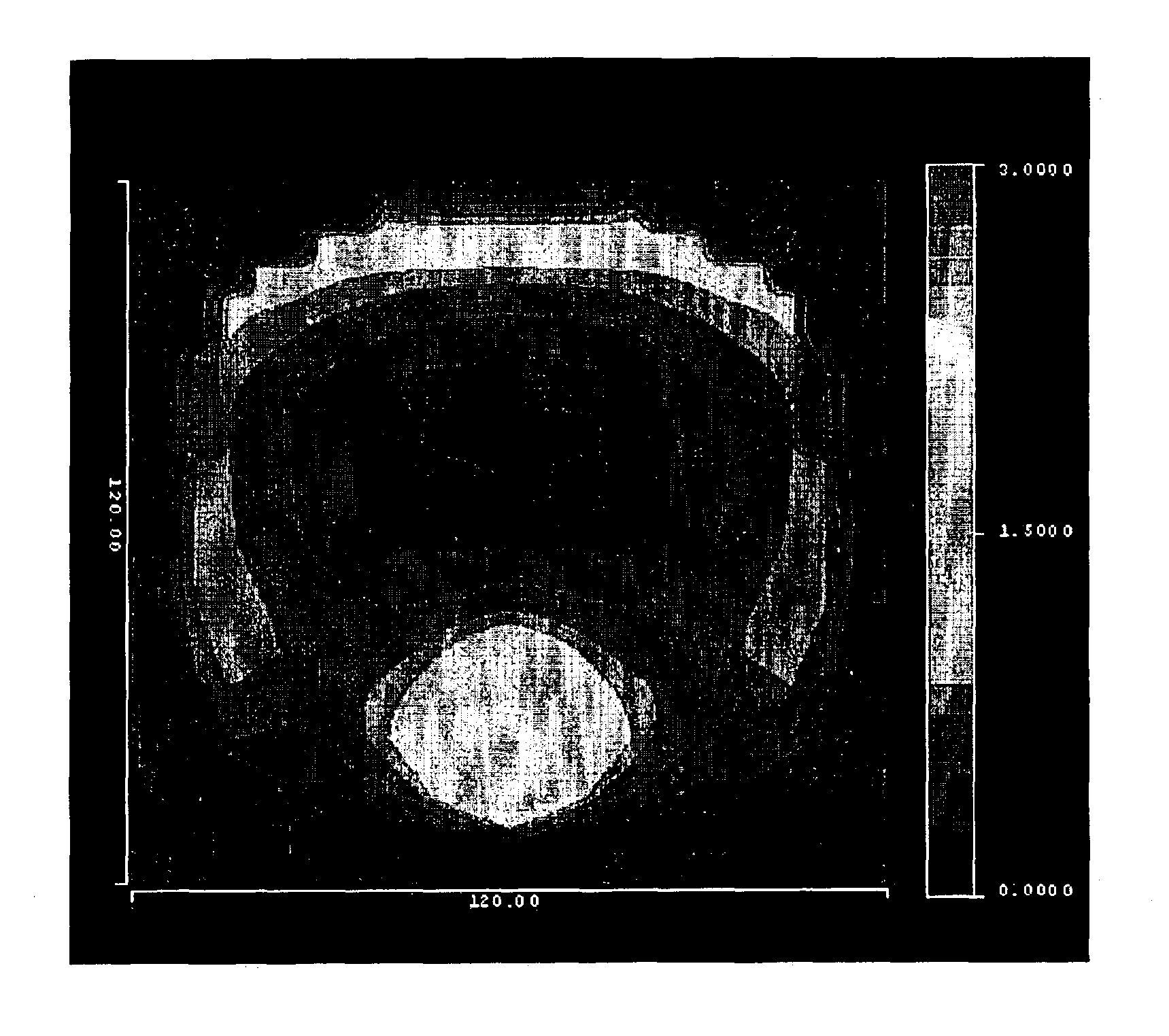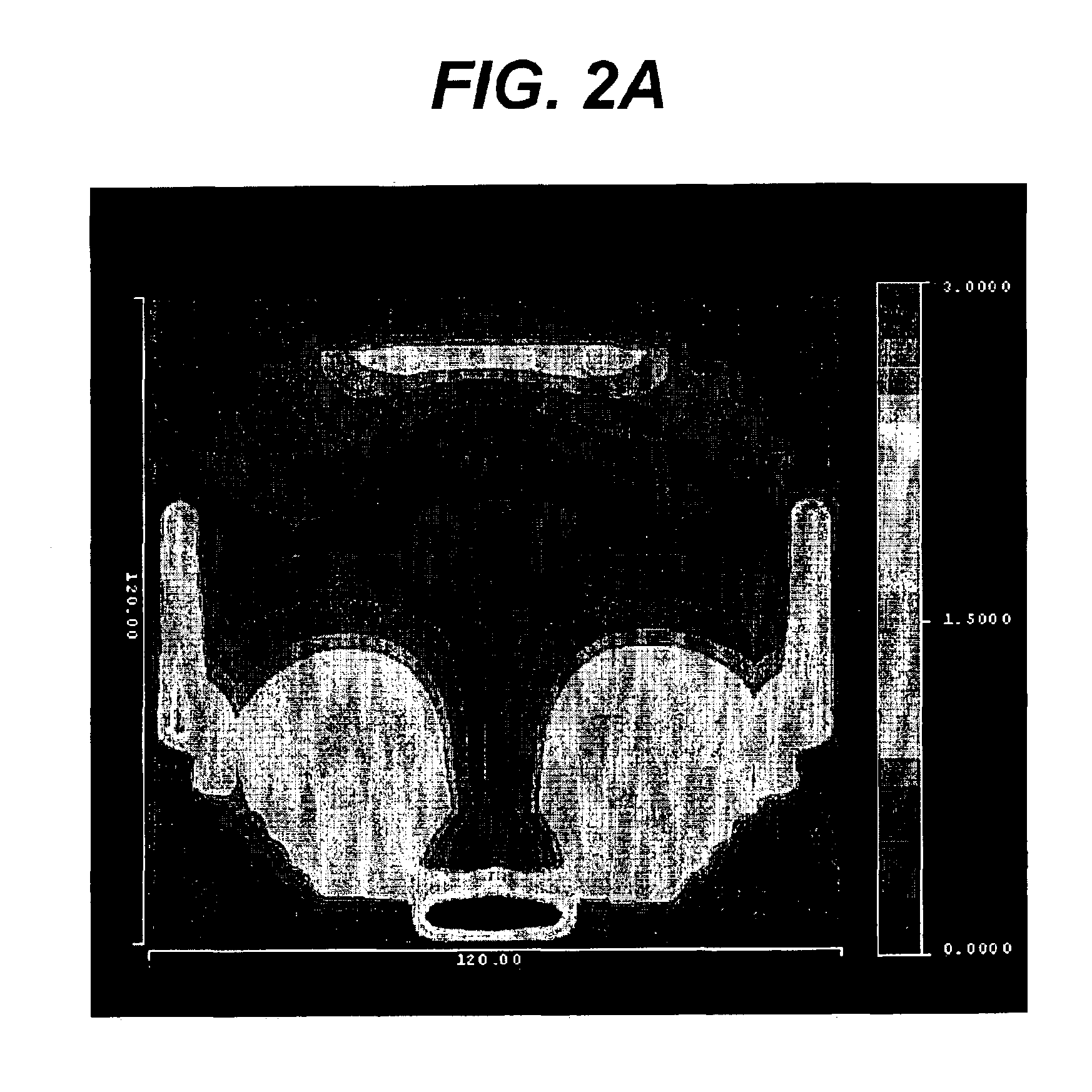Method for designing progressive addition lenses
a technology of progressive addition and lens design, applied in the field of progressive addition lens design, can solve the problems of limiting the designer's ability, unable to achieve the optimum design form, and the lens that will not perform optimally in conjunction with the ey
- Summary
- Abstract
- Description
- Claims
- Application Information
AI Technical Summary
Benefits of technology
Problems solved by technology
Method used
Image
Examples
example 1
[0069]A baseline example of a lens having two progressive surfaces is provided, which lens has a portion of the total add power on each of the lens surfaces. Additionally, the peaks of the unwanted astigmatism on each of the surfaces were misaligned as described in U.S. Pat. No. 6,149,271. FIGS. 1 through 3 show the add power, the unwanted astigmatism, and the RMS spot size. The plots are from −60 to 60 degrees. The lens diameters in these plots are 60 mm. This, and all subsequent designs have −4.0 diopters of sphere power and 2.0 diopters of add power.
example 2
[0070]A lens having two progressive surfaces was provided using the method of this invention. The lens has a sphere power of −4.0 diopters and 2.0 diopters of add power. The surfaces of the lens were determined by the coefficients of equations of the form of Equation I. The front surface was defined by a base curvature c and a conic constant k and the remainder of the rotationally symmetric aspheric terms are zero. Deltaxy was defined by sets of bi-cubic spline coefficients for a 4 by 8 point grid of evenly spaced points that define the right half of the lens. The lens has a left-right symmetry. The back surface of the lens was defined by a similar function with the conic constant k on the back surface being 0.
[0071]A best fit of the function used to represent the surfaces was made to the surfaces for the baseline design of Example 1. This provided a starting point for the simultaneous optimization of the two surfaces using the method of the invention. The optimization was performed...
example 3
[0075]The lens of Example 3 has two progressive surfaces. The surfaces of this lens, the merit function, and the optimization process are the same as for Example 2 with the following exception. The blur function contribution to the merit function of Equation VIII was used with the relative weighting of the RMS spot size portion of the merit function Wrmsθx,θy adjusted to be the same as the contribution to the merit function based upon the contributions from the unwanted astigmatism Wastθx,θy along the central, vertical corridor.
[0076]A summary of the performance of this lens is shown graphically in FIGS. 7 through 9. In this lens, the maximum unwanted astigmatism for this 2.0 diopters add power lens is approximately 0.75 diopters. Compared to a conventional PAL, this lens shows a large reduction in the maximum unwanted astigmatism and RMS spot size as well as increased near and intermediate reading zone widths.
PUM
 Login to View More
Login to View More Abstract
Description
Claims
Application Information
 Login to View More
Login to View More - R&D
- Intellectual Property
- Life Sciences
- Materials
- Tech Scout
- Unparalleled Data Quality
- Higher Quality Content
- 60% Fewer Hallucinations
Browse by: Latest US Patents, China's latest patents, Technical Efficacy Thesaurus, Application Domain, Technology Topic, Popular Technical Reports.
© 2025 PatSnap. All rights reserved.Legal|Privacy policy|Modern Slavery Act Transparency Statement|Sitemap|About US| Contact US: help@patsnap.com



